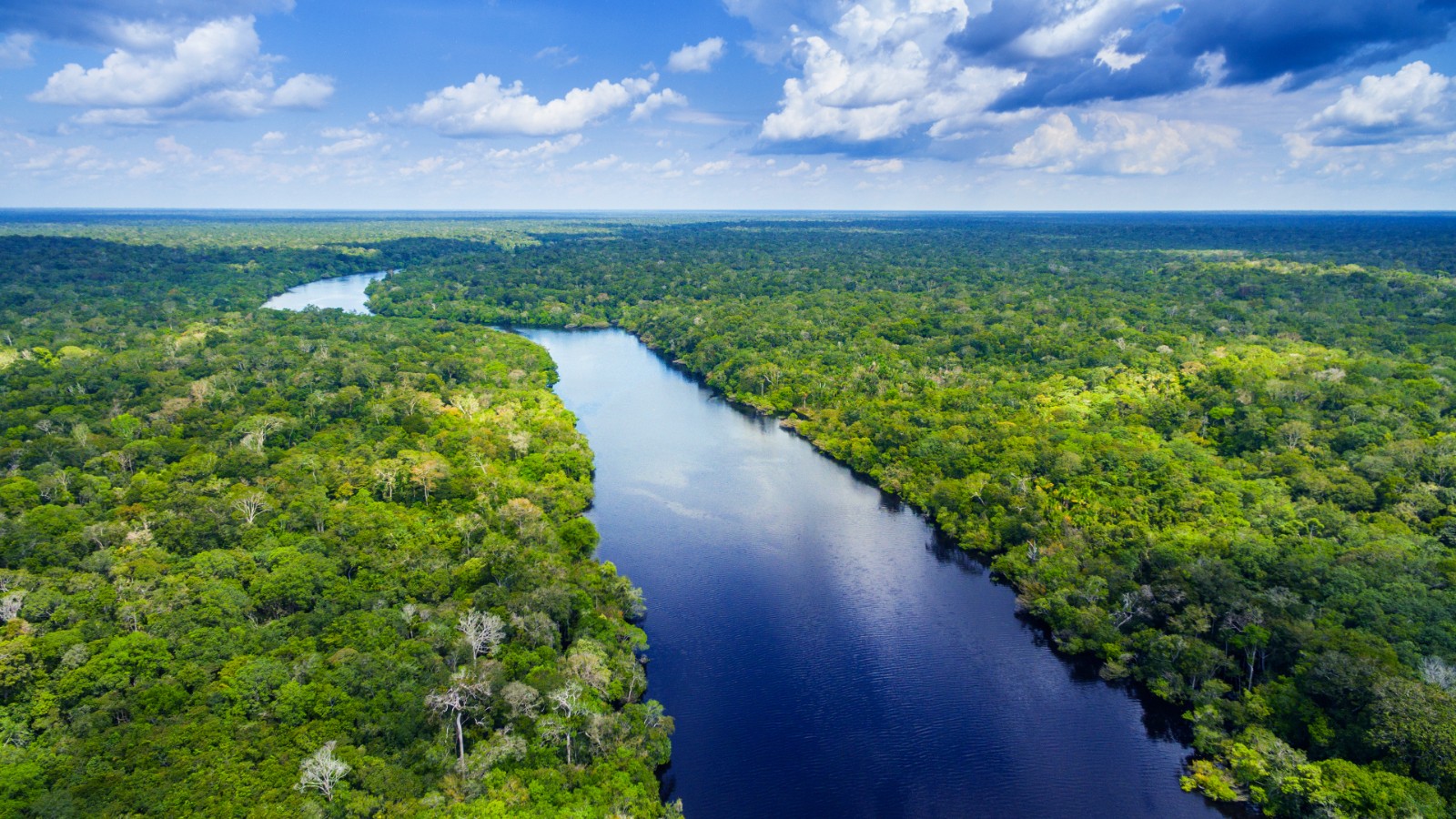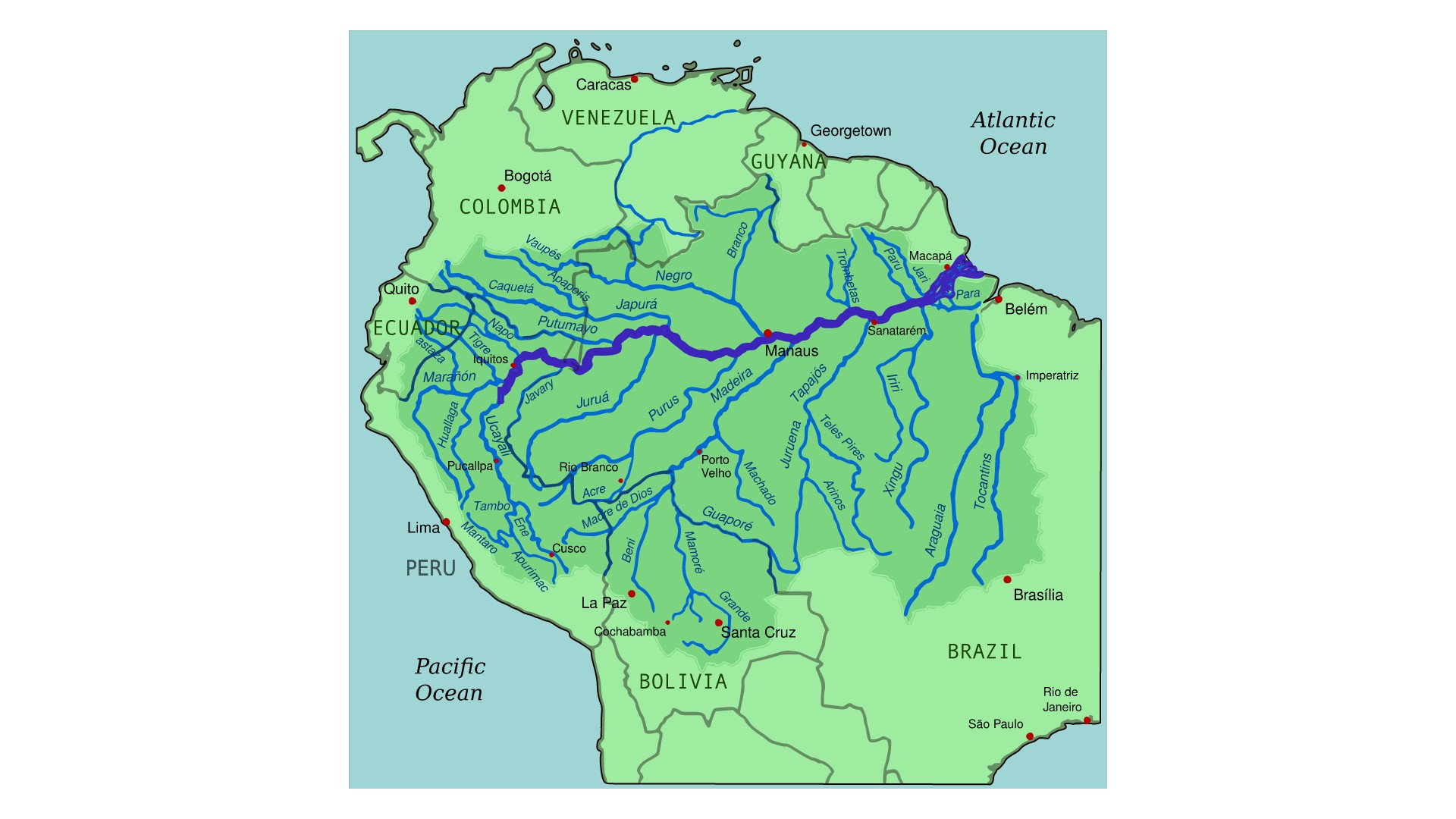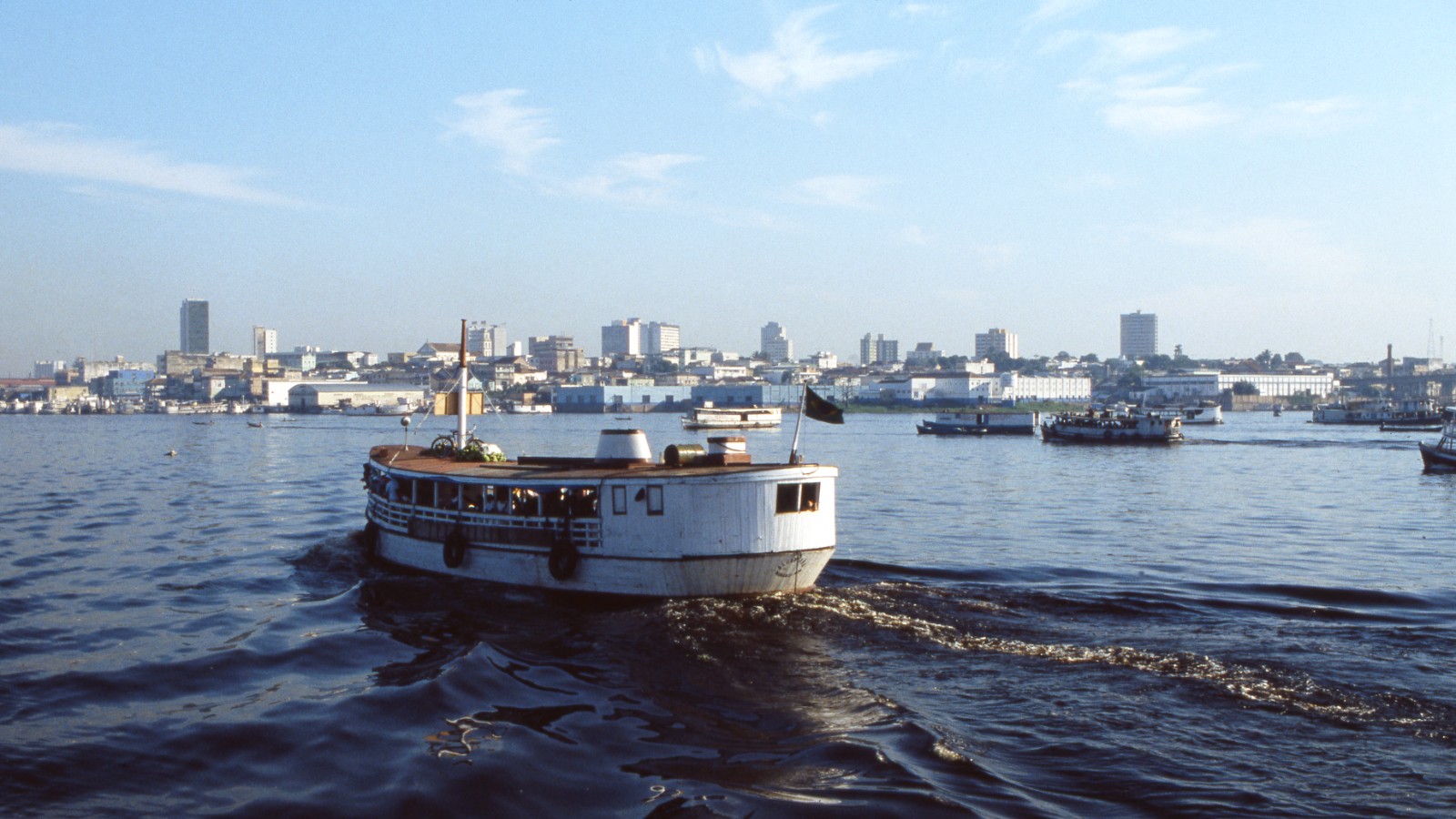
Why are there no bridges over the Amazon River?
Despite being around 4,300 miles in length, the Amazon River surprisingly has no bridges.

The Amazon River is the world's second-longest river and one of the planet's most significant waterways. It contains more fresh water by volume than any other river, is home to the world's largest species of river dolphin, and hosts 100 species of electric fish and up to 60 species of piranhas.
Yet, despite its many and varied qualities, there is something that cannot be found on the Amazon River: bridges.
Given the Amazon flows through three countries (Peru, Colombia and Brazil) and more than 30 million people live in the river's basin, according to the World Wildlife Fund, it seems somewhat improbable that no bridges span the river. So why is this the case? Are there fundamental difficulties with building such structures in a rainforest containing swamps, extensive wetlands and deep, thick undergrowth? Are there financial barriers? Or is it simply not worth the effort?
Related: What's the world's longest bridge?
The Amazon anomaly
When compared with some of the world's other most recognisable rivers, the Amazon's lack of bridge crossings is an oddity. There are about nine Nile-spanning bridges in Cairo alone; more than 100 bridges have been completed in the last 30 years across the Yangtze, Asia's premier river; while Europe's Danube, which is only one-third as long as the Amazon, has 133 bridge crossings.
So what's the deal with the Amazon?
"There is no sufficiently pressing need for a bridge across the Amazon," Walter Kaufmann, chair of Structural Engineering (Concrete Structures and Bridge Design) at the Swiss Federal Institute of Technology (ETH) Zurich, told Live Science in an email.
The Amazon, for much of its 4,300-mile (6,920 kilometers) length, meanders through areas that are sparsely populated, meaning there are very few major roads for any bridge to connect to. And in the cities and towns that border the river, boats and ferries are an established means of moving goods and people from bank to bank, meaning there is no real need for bridges to be built, other than to make trips slightly quicker.
Sign up for the Live Science daily newsletter now
Get the world’s most fascinating discoveries delivered straight to your inbox.
"Of course, there are also technical and logistical difficulties," Kaufmann noted.
According to Kaufmann, the Amazon is far from an ideal location for bridge builders, as it has an array of natural stumbling blocks that would need to be conquered by engineers and construction workers.

For example, its extensive marshes and soft soils would necessitate "very long access viaducts [a multi-span bridge crossing extended lower areas] and very deep foundations," and this would require hefty financial investment, Kaufmann said. Additionally, the changing positions of the river's course across the seasons, with "pronounced differences" in water depth, would make construction "extremely demanding." This is due, in part, to the river's water level rising and falling throughout the year and the soft sediment of the riverbanks eroding and shifting seasonally, according to the Amazon Waters initiative.
Kaufmann noted that, while these particular issues are not unique to the Amazon, "they are particularly severe" there.
"The environment at the Amazon is certainly among the most difficult [in the world]," Kaufmann said. "Bridges across straits are also challenging if the water depth is deep, but at least you know that construction is possible using pontoons, for example."
Pontoons, or floating structures, are not a solution that would work in most parts of the Amazon, Kaufmann said, because the river is hugely impacted by seasonal variances, which adds an additional layer of complexity. For instance, during the dry season — between June and November — the Amazon averages a width of between 2 and 6 miles (3.2 and 9.7 km), while in the wet season — December through April — the river can be as wide as 30 miles (48 km), and the water level can be 50 feet (15 meters) higher than it is during the dry season, according to Britannica.
"This challenge would be unique," Kaufmann said.
So, as well as there being no immediate need for a bridge across the Amazon, the processes involved with building one would be considerable.
Related: What's the biggest freshwater fish in the world?
A bridge too far?
It is worth noting that, although no bridges cross the Amazon, there is one that crosses the Negro River, its main tributary. Called the Ponte Rio Negro, the bridge, completed in 2011, connects Manaus and Iranduba, and it is to date the only major bridge that crosses any Amazon tributary.
The Nanay Bridge, which will span Peru's Nanay River — another of the Amazon River's tributaries — was scheduled to open in 2021, but its completion date has been pushed back. According to a tweet recently published by the Peruvian Ministry of Transport and Communications, it is now scheduled to open in some capacity by the end of 2022.
But, while there are no concrete plans in place for a bridge over the Amazon, "this doesn't mean it won't happen," Philip Fearnside, an American biologist, scientist and conservationist who has spent much of his career in Brazil, told Live Science.
In 2019 Jair Bolsonaro, Brazil's president, declared that he wanted a bridge across the Amazon to be built as part of his "Rio Branco Project," but as yet there has been no progress. "It would be very expensive compared to the economic benefits it would bring," Fearnside noted.

Upon the completion of the Ponte Rio Negro, provisional plans were drawn for a bridge across the Upper Amazon — known as the Solimões River — in the municipality of Manacapuru, which would connect the BR-319 highway to Manaus and remove the need for a ferry crossing.
"BR-319 is a high political priority, but it does not have an economic justification," Fearnside said. "It is cheaper to transport products from the factories in the Manaus Free Trade Zone to São Paulo by water."
Additionally, as stated in a 2020 commentary Fearnside wrote for the environmental news site Mongabay regarding the proposed development of the BR-319, the creation of such a bridge would "give deforesters access to about half of what remains of the country's Amazon forest, and so is perhaps the most consequential conservation issue for Brazil today," Fearnside said.
So, is there any chance that a bridge could be built across the Amazon in the near future?
"I think a bridge would only be built if the need dominates over the difficulties and cost," Kaufmann said. "Personally, I doubt that this will happen soon, unless there are unforeseen economic developments in the region."
Editor's Note: Updated at 10:52 a.m. EDT on June 2 to add information about the Nanay Bridge's construction in Peru.
Originally published on Live Science.

Joe Phelan is a journalist based in London. His work has appeared in VICE, National Geographic, World Soccer and The Blizzard, and has been a guest on Times Radio. He is drawn to the weird, wonderful and under examined, as well as anything related to life in the Arctic Circle. He holds a bachelor's degree in journalism from the University of Chester.









